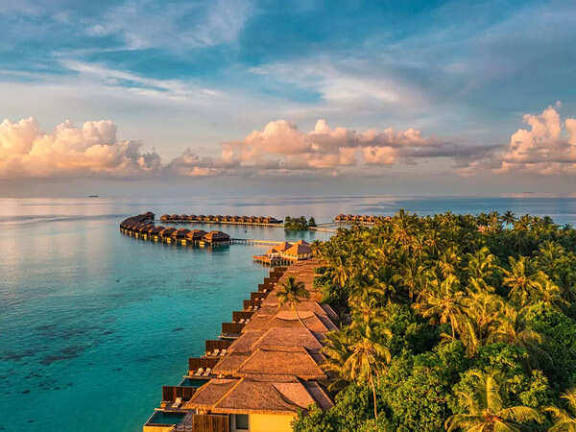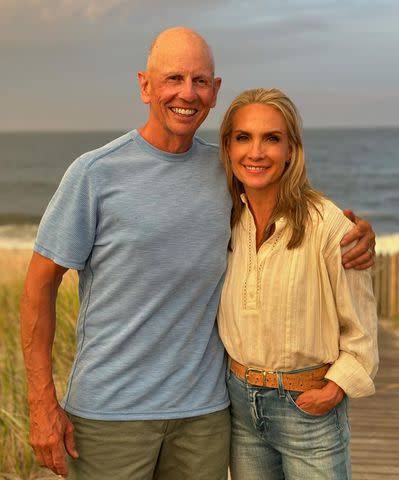Maldives travel warning: US State Department advises caution,australia

Due to terrorism, caution increased through maneuvers in Maldives. Consultant Summary. Terrorist groups can attack with little or no warning. Today we will discuss about Maldives travel warning: US State Department advises caution,australia
Maldives travel warning: US State Department advises caution,australia
The Maldives has long been a poster-paradise: turquoise lagoons, white-sand beaches, underwater villas, and coral reefs teeming with life. Yet even paradise is not immune to geopolitical, security, and environmental risks. In recent years, both the U.S. State Department and the Australian government have issued travel advisories for Maldives, urging their citizens to adopt a heightened degree of caution. Below is a detailed, up-to-date examination of those warnings, their basis, practical travel implications, and tips for travelers.
1. Background: The Maldives in Brief

The Republic of Maldives is an archipelagic nation in the Indian Ocean, south of India and Sri Lanka. It comprises nearly 1,200 coral islands grouped into 26 atolls, of which roughly 200 are inhabited. Tourism is a primary pillar of the Maldivian economy, and many islands operate under the “one island, one resort” model. The capital, Malé, is densely populated and also the political and economic hub.
Because many tourists stay on isolated resort islands, far from the bustle of local communities, the Maldives often feels detached from the tensions of urban or political life. However, parts of the country—especially Malé and inhabited islands—are more exposed to social, economic, or political dynamics.
2. The U.S. State Department Advisory
2.1 Current Advisory Level & Basis
-
As of July 11, 2024, the U.S. Department of State maintains the Maldives at Level 2: “Exercise Increased Caution.”
-
The advisory’s Country Summary states that “terrorist groups may conduct attacks with little or no warning,” particularly targeting tourist locations, transportation hubs, markets/shopping malls, and local government facilities.
-
It warns further that attacks on remote islands are possible, which could delay security or emergency response times.
-
The advisory has been reissued periodically, with minor edits, but its core risk posture remains.
2.2 Recommended Precautions
The U.S. advisory suggests a number of safety measures:
-
Avoid demonstrations and crowds. Even seemingly peaceful protests may escalate.
-
Monitor local media. Be ready to change plans if something develops.
-
Stay alert in tourist zones. Be aware of your surroundings in resorts, markets, transit hubs, and public places.
-
Enroll in STEP (Smart Traveler Enrollment Program). This helps U.S. consular services locate you in emergencies.
-
Develop contingency plans. Know what you would do in an emergency.
-
Check passport/visa/health requirements. The advisory also includes standard travel information.
2.3 Limitations & Special Considerations
-
There is no U.S. embassy in the Maldives. U.S. citizens in Maldives rely on the U.S. Embassy in Colombo, Sri Lanka, for many consular services.
-
Because many resorts are located on remote islands, emergency medical or security response can be delayed.
-
The advisory does not ban travel, but encourages travelers to remain vigilant and cautious.
3. Australia’s Travel Advice for Maldives
3.1 Current Advice & Level
-
The Australian Government, through Smartraveller (DFAT), currently classifies the Maldives under a “Exercise a high degree of caution” advisory.
-
The updated advice was issued on June 5, 2025, as part of an annual review.
-
While the level remained the same, the wording emphasizes civil unrest and terrorism risks.
3.2 Key Risks Highlighted
-
Public demonstrations can occur in greater Malé and inhabited islands, and these could turn violent.
-
Urban crime: The advice mentions drug-related crime, gang violence, petty theft (especially in urban settings such as Malé and non-resort islands)
-
Terrorism threat: Terrorist attacks could occur in locations visited by foreigners.
-
Protests and gatherings: The advisory urges travellers to avoid areas affected by protests, even if they appear calm.
-
Natural hazards & infrastructure constraints: The sea has strong currents; lifeguards may not always be available; medical facilities are limited; tropical storms, monsoons, or tsunamis are possible.
3.3 What Australia Advises You Do
-
Avoid protest zones. Don’t get close to demonstrations.
-
Monitor local media and developments. Be adaptive in plans.
-
Follow local authority instructions. Security personnel may issue guidance or curfews.
-
Stay in contact with the Australian High Commission in Malé. Know how they can help you.
-
Get good travel insurance. Make sure it includes emergency evacuation, medical cover, and trip cancellation.
-
Check local conditions, weather, sea safety. Because many tourist activities are water-based, understand the maritime risks.
4. Why the Warnings? Underlying Risk Factors
4.1 Terrorism & Extremism
-
The U.S. advisory explicitly references the risk of terrorist groups conducting attacks with little or no warning, and targeting tourist sites or local facilities.
-
The Australian advice also notes terrorism could occur at any time in areas visited by tourists.
-
Past incidents:
• In Malé in May 2021, an explosive device injured a politician and bystanders.
• In Hulhumalé, foreigners (including Australians) have been victims of stabbing attacks.
• In Laamu Gan, a police speedboat was set alight in March 2020. -
Radicalization and foreign fighters: U.S. sources have noted that Maldivian nationals have joined extremist groups abroad, creating concerns over domestic radical network threats.
4.2 Civil Unrest & Political Tension
-
Political polarization and protests have sometimes flared in inhabited islands and Malé.
-
Demonstrations can escalate quickly, even if they appear peaceful initially.
-
Given the small geographical size of islands and population density, disturbances in one area can have ripple effects in others.
4.3 Crime & Urban Risks
-
Petty theft, especially in markets, beaches, or crowded places, is a known risk.
-
Drug-related crime and gang violence is noted in urban and inhabited islands.
-
Violent crime is rarer, but the advisory mentions serious crime is possible and carries severe penalties under local law.
4.4 Infrastructure & Emergency Limitations
-
Many resorts are remote; medical facilities can be rudimentary. Evacuation (by boat, seaplane, helicopter) might be slow or expensive.
-
Natural hazards: strong sea currents, rip tides, and unguarded beaches lead to drowning incidents.
-
Seasonal monsoons, storms, and potential tsunamis can disrupt travel.
5. What the Warnings Don’t Mean: Clarifications & Context
5.1 Resorts vs. Inhabited Islands
One important nuance is that many resorts are located away from the urban or politically fraught zones. The Australian advisory in particular notes “resort islands are generally peaceful and secure.”
Some local commentary reinforces that tourists staying in exclusive resort islands may face less exposure to protests or unrest.
However, no place is totally insulated: transport to/from resort islands often involves transits through Malé or inhabited islands. Moreover, chartered boat or seaplane routes, islands visited for excursions (local villages, fishing islands), or transit hubs present exposure points.
5.2 Historical Safety & Reputation
Despite warnings, the Maldives still attracts millions of tourists yearly. Many past visits have been incident-free. Local tourism stakeholders argue that security protocols in resorts are robust, and authorities coordinate closely to protect visitors.
Still, the purpose of advisories is not to alarm unduly, but to encourage prudent behavior and awareness of potential risks.
5.3 Dynamic Risk Landscape
Advisories are updated not only based on major incidents, but on evolving threats, intelligence, political shifts, and seasonal factors. As such, a warning today does not always equal “danger tomorrow” — but it is a signal to remain vigilant and informed.
6. Travel Tips for Safer Maldives Experience
If you decide to travel to Maldives despite the advisories (or after assessing them), here are practical tips to mitigate risks.
6.1 Pre-Trip Planning
-
Register with your embassy/consular service (e.g. U.S. STEP).
-
Research current advisories close to your departure date; these can shift.
-
Select resorts with good safety track records. Opt for resorts with 24/7 security, good reviews, and transparency about safety protocols.
-
Check health and liability coverage. Your travel insurance should cover medical evacuation, search & rescue, trip cancellation, and emergency assistance.
-
Prepare local contacts. Keep contact info for your embassy, local authorities, resort, and tour operator.
-
Inform someone of your itinerary. Share your daily plans with a trusted friend or family.
6.2 During Transit & Arrival
-
Stay alert at airports, seaplane or boat transfer points — these are more exposed.
-
Avoid loitering or displaying valuables in crowded transit hubs.
-
Follow instructions from security or resort transport staff.
6.3 While on Islands / In Resorts
-
Avoid unplanned visits to inhabited or local islands without vetted guides.
-
Avoid demonstrations or gatherings, even if they seem harmless.
-
Use official tour operators and guides who understand local security conditions.
-
Be careful in crowds, markets, public spaces — petty theft is more likely in crowded settings.
-
Use safe transport at night; avoid isolated walking after dark.
-
Respect local laws and customs — Maldives is a largely Muslim nation with conservative norms in inhabited islands.
-
Don’t travel outside resort boundaries unsupervised.
6.4 Emergency Preparedness
-
Know local emergency numbers (police, medical, coast guard).
-
Have a basic safety kit (torch, first-aid, medical info).
-
Know where nearest hospitals or evacuation points are.
-
If things escalate (protests, unrest), follow instructions from resort or security staff; sometimes staying put and sheltering is safer.
-
Maintain communication (keep phone, power bank, SIM card or roaming, satellite option if possible).
7. Impacts & Reactions
7.1 Tourism Sector Response
The tourism industry in Maldives is acutely sensitive to safety perceptions. When major source markets (U.S., Australia, Europe) issue cautionary notices, it can affect bookings, demand, and investor confidence. Resorts emphasize their own security measures, staff training, and coordination with authorities to reassure guests.
7.2 Diplomatic & Local Government Actions
Maldivian authorities have, in prior years, increased policing, surveillance, and counterterrorism operations in response to international concerns. They also collaborate with foreign diplomatic missions to issue reassurances and updates to travelers.
Local tourism boards and operators often highlight that the risk is localized (mainly to certain islands or urban zones) and that many guests remain unaffected during their stay.
7.3 Media, Public Perception & Travel Behavior
Media coverage of incidents or warnings can magnify perceived risk. Some travelers postpone or cancel trips; others may reduce the number of inhabited-island visits or excursions off resorts. The net effect is a drive toward safer, more controlled tourist experiences.
8. How Travelers & Media Should Interpret the Warnings
-
They are not absolute bans: Neither U.S. nor Australia advises a blanket “do not travel” to Maldives; they both urge caution and vigilance.
-
They reflect prudence, not panic: Governments are responding to intelligence and threat assessments, not necessarily ongoing widespread attacks.
-
Risk is not uniform: Some islands, resorts, or transit routes carry higher exposure than others.
-
Traveler behavior matters: Many incidents can be avoided by following basic security practices.
-
Stay current: Conditions may shift quickly; a calm day today doesn’t guarantee tomorrow.
9. Sample Timeline: Recent Incidents & Advisory Updates
| Year / Time | Incident / Change | Relevance |
|---|---|---|
| May 2021 | Explosion in Malé injuring a politician, bystanders | Example of a politically motivated attack near urban center News.com.au+1 |
| February 2020 | Stabbing of foreigners in Hulhumalé (one Australian injured) | Illustrates risk even in relatively residential islands |
| March 2020 | Police speedboat set on fire in Laamu Gan | Example of property attack (non-tourist area) |
| June 2025 | Australia updates Maldives advisory (emphasis on protest risk, terrorism) | Reflects evolving caution, with no change in level but stronger wording |
| 2024 | U.S. re-issues Maldives Level 2 advisory | Ongoing consistency in U.S. risk posture |
This timeline shows that the Maldives has experienced occasional security incidents, and governments have responded by adjusting advisories and messaging accordingly.
10. Conclusion
The Maldives remains a beloved destination for travelers seeking tropical beauty, underwater wonders, and relaxing escape. But no destination is risk-free. The recent warnings from the U.S. State Department and the Australian government signal the need for more informed, cautious travel choices.
For prospective visitors, the key is balance: appreciate the allure of the Maldives, while respecting the security environment and taking practical steps to mitigate risk. By planning carefully, staying informed, following local guidance, and being situationally aware, many travelers can still enjoy a memorable, safe Maldives experience.
How useful was this post?
Click on a star to rate it!
Average rating 0 / 5. Vote count: 0
No votes so far! Be the first to rate this post.
About the Author
usa5911.com
Administrator
Hi, I’m Gurdeep Singh, a professional content writer from India with over 3 years of experience in the field. I specialize in covering U.S. politics, delivering timely and engaging content tailored specifically for an American audience. Along with my dedicated team, we track and report on all the latest political trends, news, and in-depth analysis shaping the United States today. Our goal is to provide clear, factual, and compelling content that keeps readers informed and engaged with the ever-changing political landscape.




